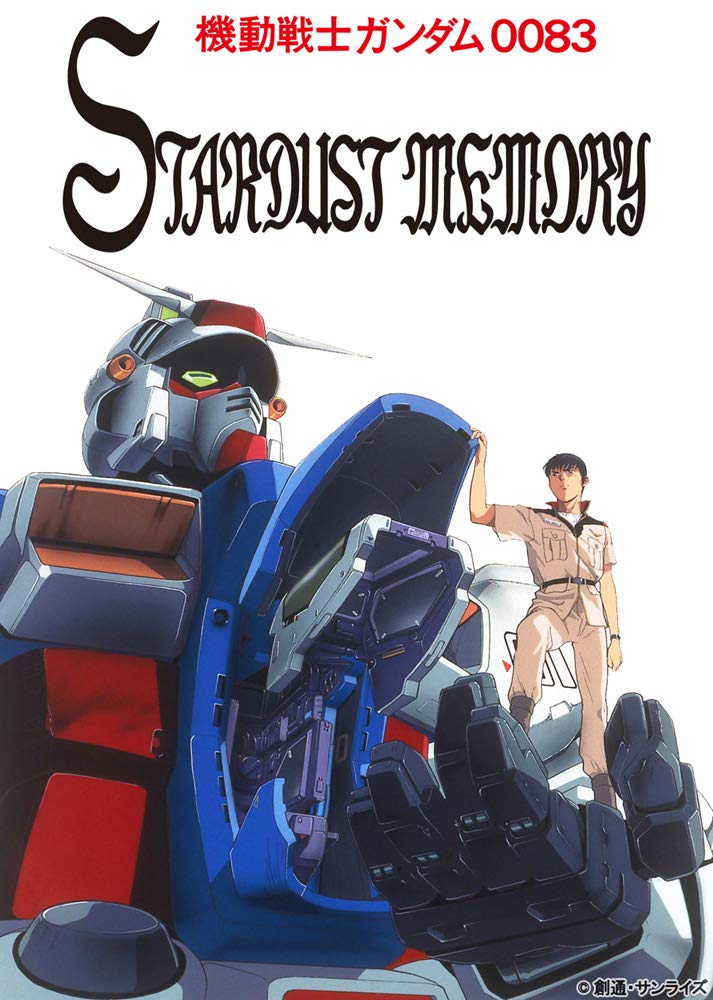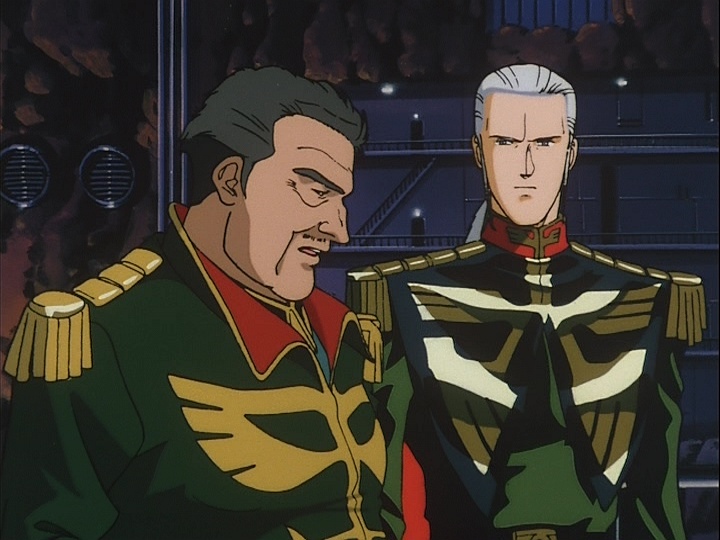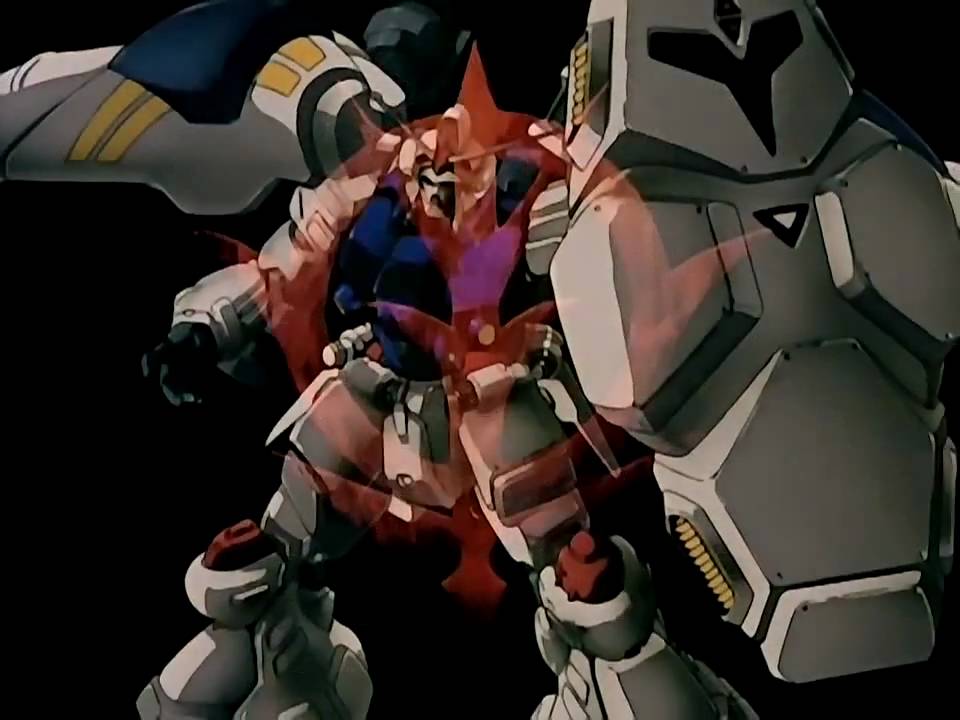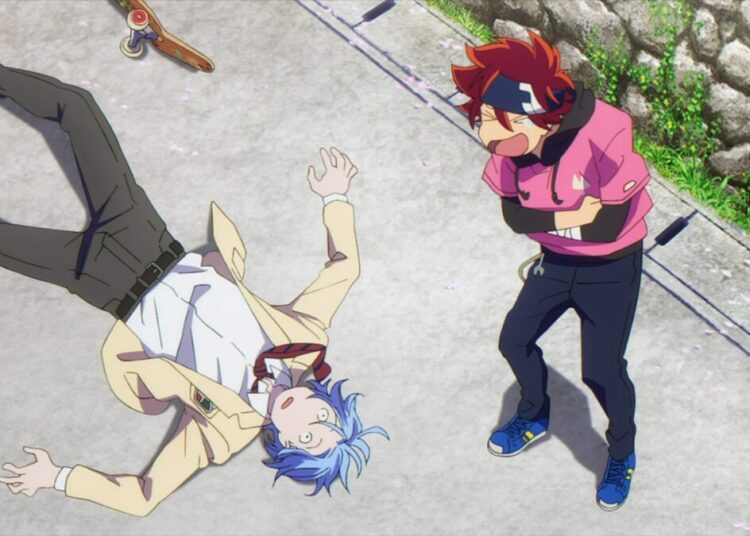Coming off the heels of 0080: War in the Pocket (1989), Mobile Suit Gundam 0083: Stardust Memory (1991-92) is the second major OVA production in the long-running Gundam franchise to be headlined by people apart from creator Yoshiyuki Tomino. Directed by Mitsuko Kase and Takashi Imanishi, its reputation nowadays is for stumbling short of greatness. Even then, it’s undoubtedly a solid entry in the saga, in its own right.

Comprised of 13 episodes (with the theatrical release The Last Blitz of Zeon running at 120 minutes), and two Mayfly of Space shorts, the anime had quite a bit of industry star power going for it. In addition to Tomino himself helping in writing the plot, the work featured the mecha designs of Shoji Kawamori (of Macross fame), with character art by a certain Toshihiro Kawamoto, who went on to found Studio Bones and direct Cowboy Bebop (1998). With such pedigree, it can make you wonder: what is it about this, that makes both loved and divisive?
Top Gun meets Metal Gear
Stardust Memory, rather than retreading the One Year War, shifts the Universal Century backdrop to the titular year, serving as an interquel between the original series and Mobile Suit Zeta Gundam (1986). Humanity is finally at peace, yet all is not what it seems. Despite losing the conflict, a group of rogue Zeon holdouts led by the Delaz Fleet still fights the Earth Federation, with an insidious plan being set in motion that would sate their thirst for revenge. It’s amidst this that Ensign Kou Uraki (Ryo Horikawa, Paul Stephen) finds himself assigned to Torrington Base and the Pegasus-class ship Albion as a test pilot, only to cross paths with prototype Gundams, Anaheim Electronics engineer Nina Purpleton (Rei Sakuma, Dorothy Elias-Fahn) and the notorious Spacenoid ace Anavel Gato (Akio Ootsuka, Kirk Thornton). All the while, deeper conspiracies lurk behind the scenes, culminating in the infamous Titans rising to power.

One fascinating aspect about the OVA, aside from the Zeta connections (including role reprisals) is how it initially plays up its Top Gun-inspired pretensions, which never fully go away. From the updated fashions and hairstyles on individuals to the more rugged and detailed art style, the animators make a conscious effort to invoke the ‘80s and early ‘90s Hollywood. Even the music makes copious use of power ballads and synth-heavy action setpieces. These all blend, however, with the plot’s murkier, conspiratorial undertones ala Hideo Kojima’s Metal Gear, which takes greater prominence with each passing episode. On top of the GP-02 “Physalis” that Gato hijacks for the Delaz Fleet being very much a Metal Gear Gundam (due to its purpose of firing nuclear warheads), the realities of war and how people exploit these to forward their own agendas are ever-present. One could even argue that the battles you see on-screen are themselves a clever distraction from the real scheming going on.
This is also driven home by the myriad characters shown throughout. Beyond the action film exteriors, they’re by and large shown to be very distinct. Be it in how simultaneously fatherly and cool Lt. South Burning (Masashi Sugawara, Paul St. Peter) can be, or the way Kou himself grows from a talented but naïve rookie to a hardened Mobile Suit pilot with a personal stake, you can tell that they have their own stories to tell. Like in 0080, however, the effects of war and animosity can have on people are highlighted, even after the fighting has formally ended. From Cima Garanhau’s (Mari Mashiba, Carol Stanzione) PTSD-driven agenda, to the lengths some such as Bask Om (Daisuke Gōri, Noah Umholtz) will go to ensure their ideas of a new order, the conflict could make anyone heroes and monsters alike.
Released in 1992 and originally a CD Drama piece, the first Mayfly of Space short not only does a good job further humanizing villain Cima Garanhau. It also reveals just how war can impact people differently, with tragic results. (Source: YouTube)
All these are carried on by undoubtedly solid production values. On top of the detail seen on everything, the way explosions, Mobile Suit damage, and overall combat are animated makes these a spectacle to watch, especially in high definition. The audio, meanwhile, is nothing to downplay, with both strong voice-acting and a soundtrack that manages to combine the right blend of ‘80s-esque action and utter dread. That the overall package at times foreshadows the look and feel of Cowboy Bebop, or that the World War II/Cold War aesthetics on both sides further add to the mystique of the Universal Century certainly help a lot in compensating for the flaws that become evident with each viewing.
Stumbling Forward
Stardust Memory, for all it does well, stumbles towards the finish line despite its efforts. This is especially evident in the dissonance between the first and second halves of the series, thanks in no small part to the OVA changing directors halfway into production. Whether it’s the abruptness of the Kelly Layzner (Tesshô Genda, Richard George) arc, involving a retired Zeon soldier and Delaz Fleet sympathizer who befriends Kou, or the inexplicable romantic drama involving Nina and Gato that’s never so much as foreshadowed beforehand, you get the impression that something got lost at the cutting room floor. The result is a plot that gets muddled and unnecessarily complicated towards the climax. The general moral ambiguity between the Federation and those still fighting for Zeon, though carried over from preceding entries, would also rub some the wrong way, particularly those looking for a more straightforward antagonist.

Then, there’s Mitsuo Hagita’s soundtrack. As solid and memorable as it is, you can’t help but notice how eerily familiar a good deal of the music can be at times, to the works of James Horner, Jay Chattaway, and even Ennio Morricone. It turns out, according to a French fans, that the composer had taken too many cues from ‘80s Hollywood films like Brainstorm, Invasion USA, and Glory, if not lifted whole soundbites. While these inspirations have been acknowledged, especially in subsequent releases, this could sour some from fully savoring the OST.
Still, though not quite achieving greatness, Stardust Memory still holds it own as a worthy entry into the Gundam saga. Such is its enduring appeal and popularity that it’s seen multiple appearances in video games and a Blu-Ray re-release. Indeed, Imanishi has gone so far as to release a manga remake, 0083 Rebellion, which not only expands upon the OVA (including cameos and further ties with other UC works) but also fixes the disjointed narrative (including the Mayfly of Space shorts) into a cohesive whole.
https://www.youtube.com/watch?v=daz1wSHmE0w
Blu-Ray rip of the OVA’s second OP, showing how well the animation holds up even now. (Source: YouTube)
It’s no surprise, then, why this anime has earned its reputation, warts and all.














